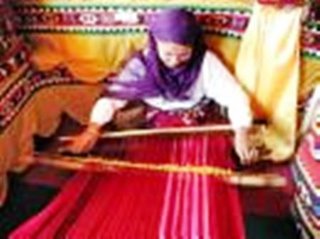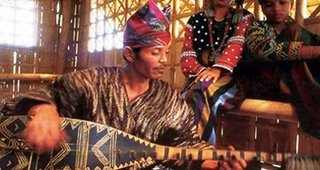OVERVIEW
Compostela Valley is blessed with nature’s magnificent work of art. It brims with natural attractions like beaches, waterfalls, forests, mountain ranges, caves, lakes, rivers, hot and cold springs.The province is proud of its people and cultural heritage - a varied mixture of ethnicity and dominance.
To be in Compostela Valley is to experience a blend of sight and sound that defines a place and a people pulsing with life yet reserved in spirit.The provincial government believes in marketing tourism responsibly. ComValeños want to explore and revel on nature’s finest without destroying the environment.
Choices within the province are almost limitless. ComValeños believe that they have something that caters to everyone’s enthusiasm, all waiting for the adventurous spirit in you. They see their province as an eco-adventure tourism destination, and once experienced, so will you.
GEOGRAPHY
Compostela Valley is situated in Southeastern Mindanao. It has a total land area of 4,666.93 sq. km. and is bounded by Agusan del Sur on the north, Davao del Norte on the west, Davao Oriental on the east and southeast, and Davao Gulf on the west and southwest.
POLITICAL SUBDIVISION
Classified as a first class province, Compostela Valley is comprised of 11 municipalities grouped into two districts. District 1 consists of Monkayo, Montevista, Maragusan, New Bataan, and Compostela; and District 2, Laak, Mawab, Nabunturan, Maco, Mabini, and Pantukan. The municipality of Nabunturan was named capital town of the province.
POPULATION
The province’s population is estimated at 600,000 per 2000 National Census and Statistics Office survey.
LANGUAGE/DIALECT
Cebuano/Visayan, Tagalog/Pilipino, Mandaya, Mansaka, Hiligaynon, Ilocano, Waray, Maranao, and Suriganonon are the dialects spoken in the province.
CLIMATE
The province is generally tropical and with no marked rainy or dry season. Its mountain ranges and forest protect the area from visiting typhoons.
INDUSTRIES
Mining, banana, agro- industrial, fishing, farming, tourism.
HISTORY
The approval of Republic Act No. 8470 on January 30, 1998, which was ratified through a plebiscite held on March 7, 1998, marks the birth of Compostela Valley. This relatively new province was carved out of its mother province, Davao del Norte.
Compostela Valley is famous for the following:
Mountain Climbing/Trekking in Mt. Candalaga
Located in Maragusan, Mount Candalaga measures up to 7,880 feet above sea level. It has 30 waterfalls and 100 cold springs. It is home to the world’s largest flower, the Rafflesia. The mountain was the venue of the 1998 Mountaineeing Federation of the Philippines (MFPI) National Climb and Congress.
Mountain Climbing/Trekking in Mt. Manurigao
Located in New Bataan, Mount Manurigao measures 4,000 feet above sea level. It boasts of its majestic falls with 4 tiers and waterfalls at a height of 230 feet. One will spot the Philippine Eagle and wild deers.
Caving/Spelunking in Kumbilan Cave
Located in Nabunturan, Kumbilan Cave has tunnel-like features, wide chambers laden with beautiful formations. The presence of stalactites and stalagmites and other formations in one chamber of the cave responds to educational needs with regards to cave evaluation. Fauna observed as occupants of the cave are snakes and fruit flies. The cave serves as a lair to fruit bats locally known as “kabyaw.”
Aguacan Cold Spring Resort
Located in Maragusan, a kilometer away from the town’s centerpoint, is the Aguacan Cold Spring Resort. It has an olympic-size swimming pool, conference hall, restaurant, cottages for overnight stay, tent area, souvenir shop, billiard hall, table tennis, and volleyball court. It can house 100 guests and is ideal for conferences and meetings.
Mt. Diwalwal Gold Site
The gold mining site is located in Mt. Diwata at Monkayo. It is one of the biggest gold mining areas in the country.
Toyuzu Inland Resort
Located in Mainit, Nabunturan, the Toyuzu Inland Resort provides total relaxation facilities, such as swimming pools, a sauna bath, and a natural steam bath. Entrance fee is PhP35/pax. Cottages for day outings are available for PhP100; overnight stay for PhP750 (room good for 3 persons) and PhP1,500 (family room for 10 people).
Tagbibinta Falls
Located in Brgy. Coronobe, Maragusan, 5 km. from the town proper, is Tagbibinta Falls. It has a series of 7 falls, the first one measuring approximately 700 ft. in height. The falls provides an ideal trekking and climbing site that offers the adventurous the exciting challenge to conquer all seven falls.
Malumagpak Falls
Located at Sitio Manurigao in New Bataan, Malumagpak Falls boasts of four powerful water cascades that would perch on the ground at approximately 300 meters high. It is home to fresh water shrimps known as “Kawili.” It is also the center of the Mt. Manurigao Adventure Climb; observing a Mansaka tribal community is a notable part of the climbing event.
Mansaka Tribal Community
Situated in Maragusan, the tribal community is composed of the Mansakas whose culture is unadulterated by the outside world. Among the attractions of the place are the tribe’s authentic dances, native tribal jewelry complete with antique necklace, Mansaka musical instruments such as the “kudlong,” “paradag,” and “takol”, a native saxophone as well as their antique bells and gongs.
Magnaga Waters Beach Resort
One can not possibly miss the Magnaga Waters Beach Resort located in Pantukan because it is along the highway. It features a restaurant, several cottages, and a venue for meetings and conferences. Choose between a sleeping area at the Bungsod or a cottage by the sea.
Kopiat Island
Located in Mabini, just off the coast of the municipality, Kopiat Island appears like a precious gem of exquisite beauty. It boasts of clear and calm waters ideal for a range of water sports activities. It has wide sections of shorelines blanketed with fine white sand. It has unspoiled reef areas with rare beds that serve as a sanctuary for exotic tropical fish and other aquatic resources.



